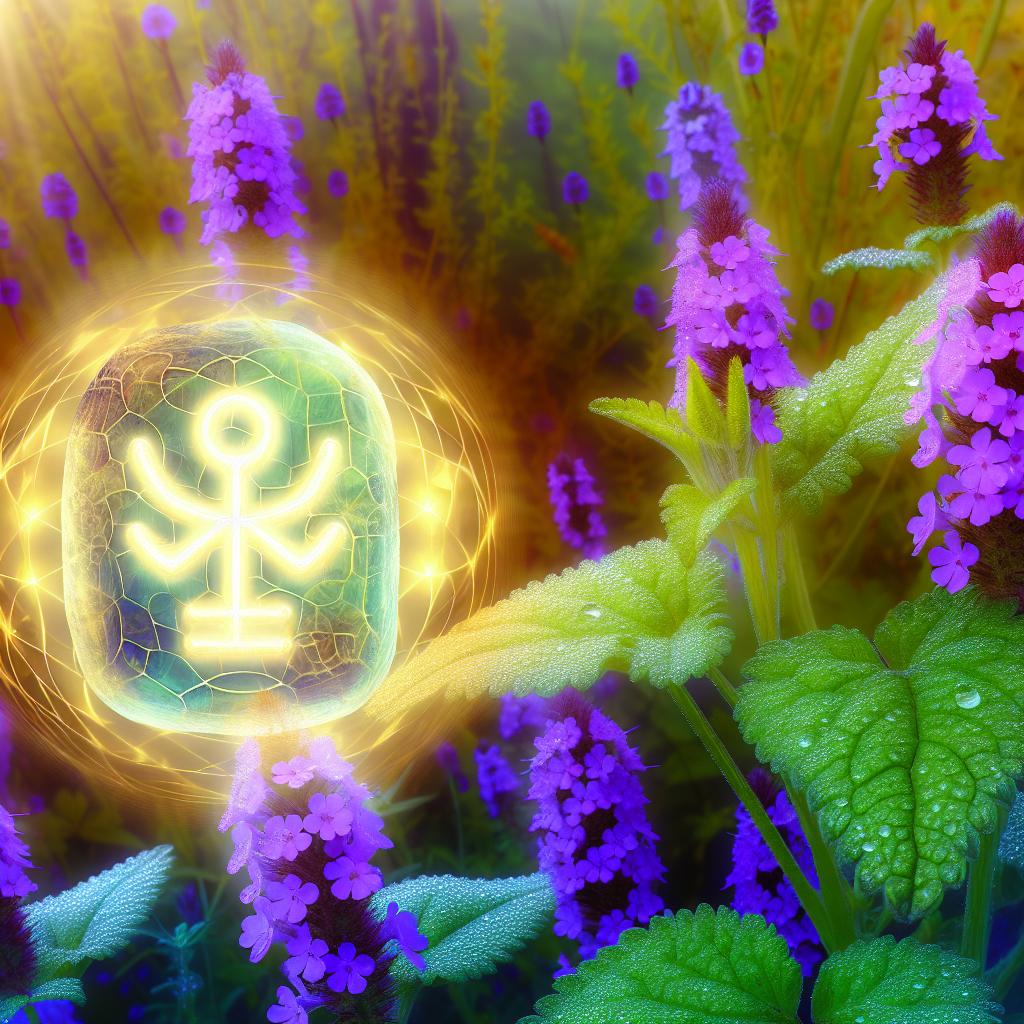Content:
Introduction
Vervain, known scientifically as Verbena, is a plant that has fascinated many cultures over the ages with its association with divine protection. This delicate flowering plant is not only admired for its aesthetic qualities but also holds a significant place in mythology, folklore, and traditional herbal medicine practices. In this exploration, we delve deep into the intricate connections between vervain and its acclaimed ability to offer divine protection across various cultures and historical contexts.
Historical Significance
From ancient times, vervain has been revered for its supposed magical and protective properties. The roots of its significance can be traced back to the druids, who regarded vervain as a sacred herb. They often incorporated it into their rituals and ceremonies designed to banish evil and promote peace. Its importance was not limited to the druids; both Romans and Greeks utilized vervain in their spiritual practices, believing in its power to purify sacred spaces and shield against evil influences.
In these ancient societies, vervain was more than a botanical specimen; it was imbued with spiritual essence and considered an intermediary between the physical world and the divine. The use of vervain to cleanse altars was not merely for physical purification but was also seen as a means to maintain a clear conduit for communication with the gods, thus emphasizing its protective role.
Vervain in Various Cultures
The remarkable significance of vervain transcends cultural boundaries, finding a place in the traditions of numerous societies. In ancient Egypt, the belief that vervain sprung from the tears of the goddess Isis elevated its status to a symbol of divine intervention and protection. This association with a goddess known for her protective attributes reinforced the plant’s reputed spiritual potency.
Similarly, under Christian tradition, vervain acquired religious significance. It is said to have been used to stanch the wounds of Jesus on the Cross, earning it the nickname “herb of the cross.” This connection with one of Christianity’s central figures and its usage in such a critical narrative contributed to its lasting reputation as a symbol of divine healing and protection.
Mythological and Folkloric Beliefs
Mythology and folklore throughout history and across cultures are replete with references to the protective qualities of vervain. Legends tell of vervain’s ability to keep nightmares at bay and guard against vampires and other malevolent entities. Carrying vervain leaves or wearing them as wreaths was thought to confer protection and ward off ill spirits, an attribute that speaks to its perceived power as a protective charm.
The idea that vervain could prevent nightmares or repel creatures of the night like vampires stems from its purported ability to establish a protective barrier around those who utilized it. This was likely further enhanced by its aromatic properties, which were believed to create a harmonious environment conducive to peace and wellbeing.
Modern Interpretations and Usage
Today, vervain remains appreciated for its alleged protective qualities, though perceptions and uses have evolved over time. Herbalists might recommend vervain in the form of tea, celebrated for its calming effects which some people believe can foster mental clarity and protect against adverse influences. Furthermore, the ritualistic use of vervain still finds a place in various spiritual practices, where it may be used to craft amulets or infused into protection rituals.
Modern applications see a blend of traditional belief and contemporary spiritual practice, with people increasingly using vervain as a symbol in meditation, spiritual cleansing, and energy balancing practices. Its presence in modern herbal preparations signifies its continued reverence and perceived value in holistic health approaches.
With its rich history and continued use, vervain encapsulates the unique intersection of nature, spirituality, and culture, as it persists as a favored plant for those seeking tranquility, clarity, and protection in various aspects of life.
Conclusion
Despite the lack of scientific evidence supporting vervain’s protective properties, its historical, mythological, and folkloric associations with divine protection have ensured its place in cultural narratives over the centuries. Whether utilized as a facet of spiritual tradition, appreciated for its delicate beauty, or embraced for its calming effects in herbal medicine, vervain continues to be a source of inspiration and a symbol of protection. Its rich legacy underscores the enduring human quest for safety and wellbeing, underscoring the ways in which nature has been interwoven with human myths and beliefs throughout time. This ongoing relationship with vervain, as both a protective emblem and a comforting presence in gardens or rituals, is a testament to its position as a cherished botanical companion in human history and culture.
